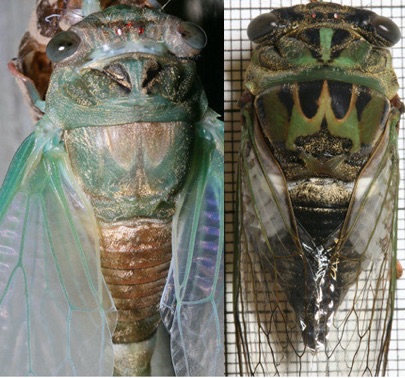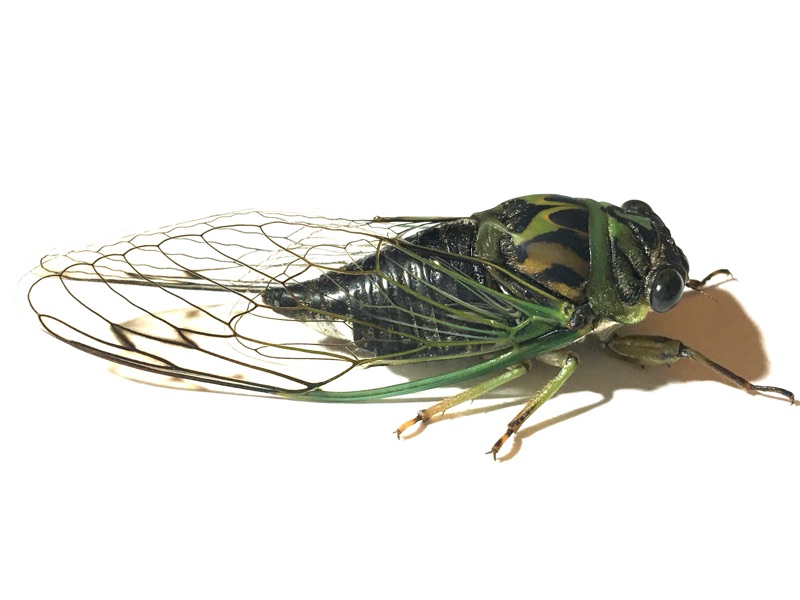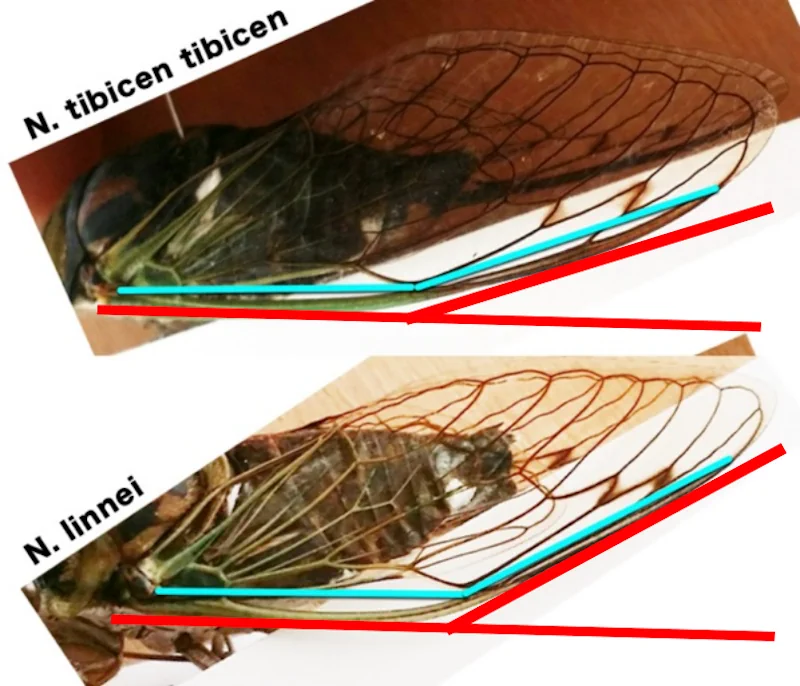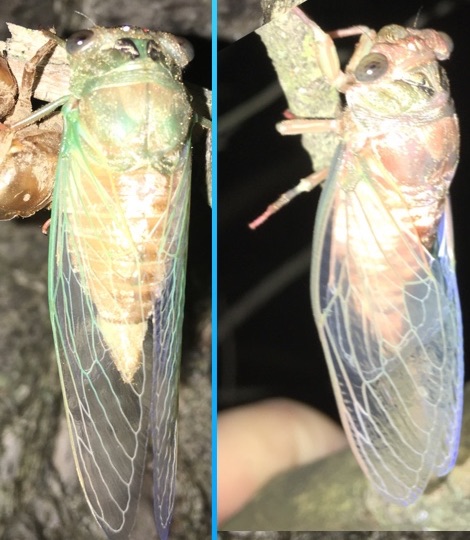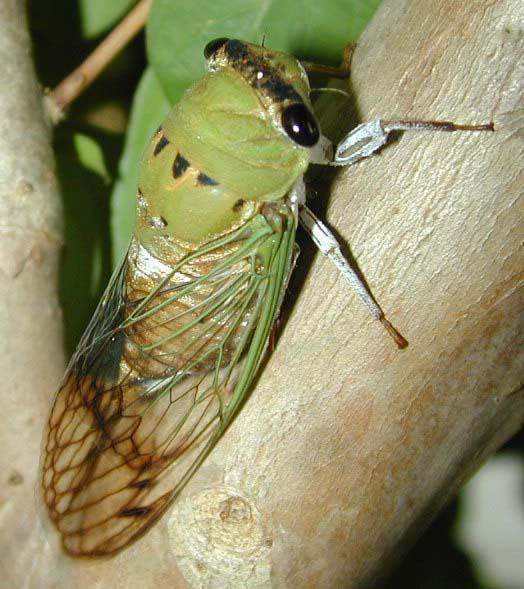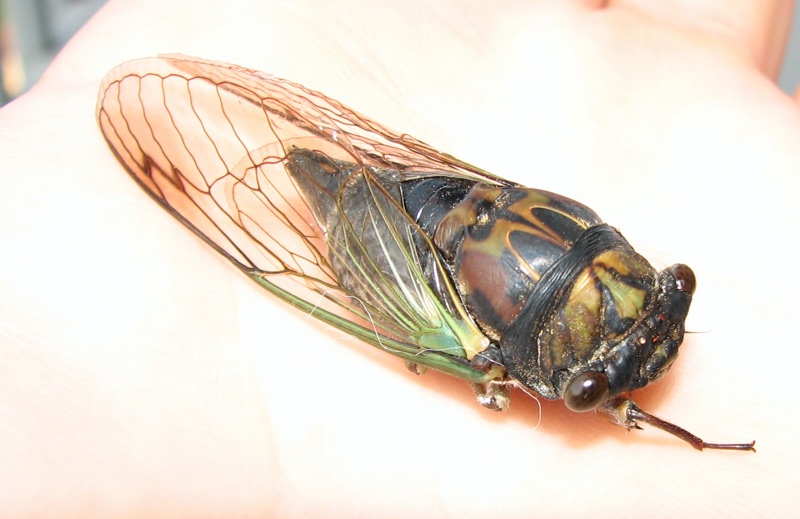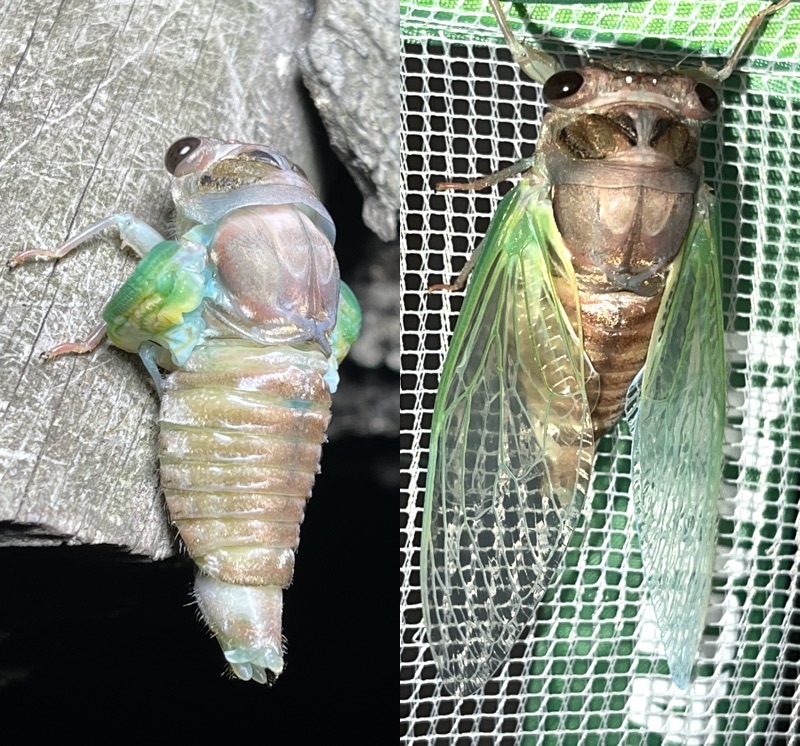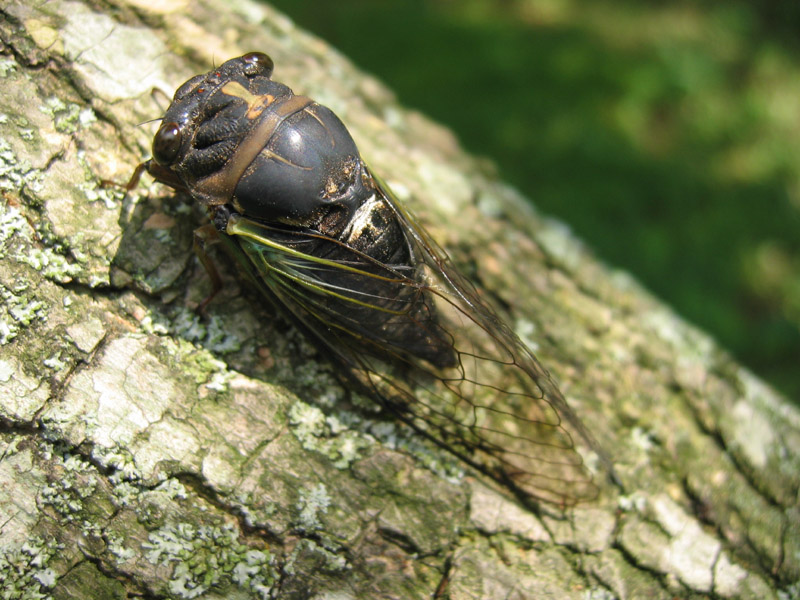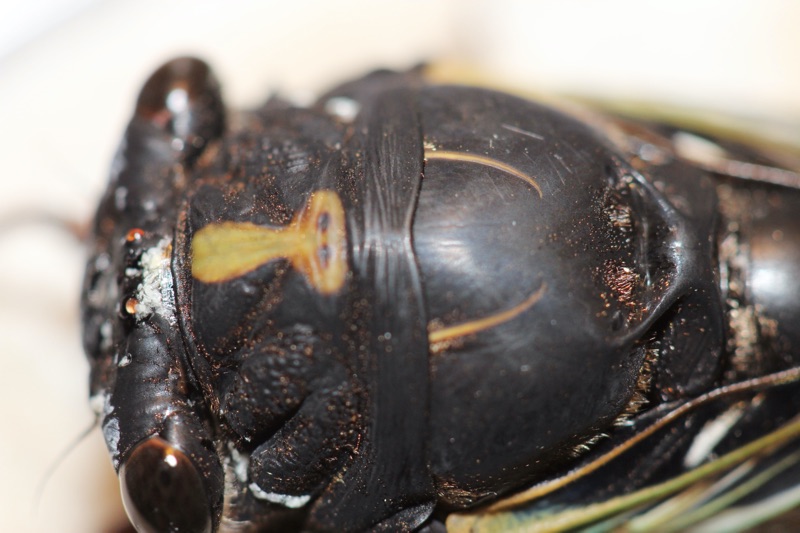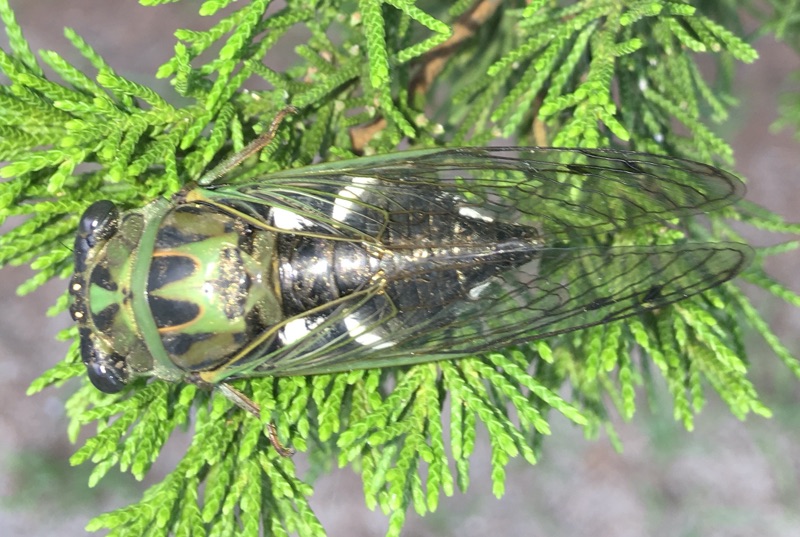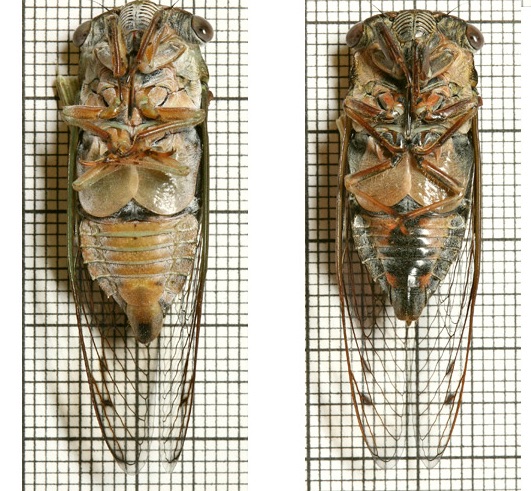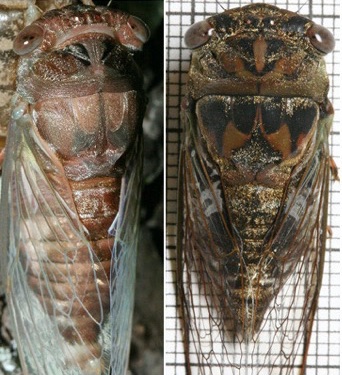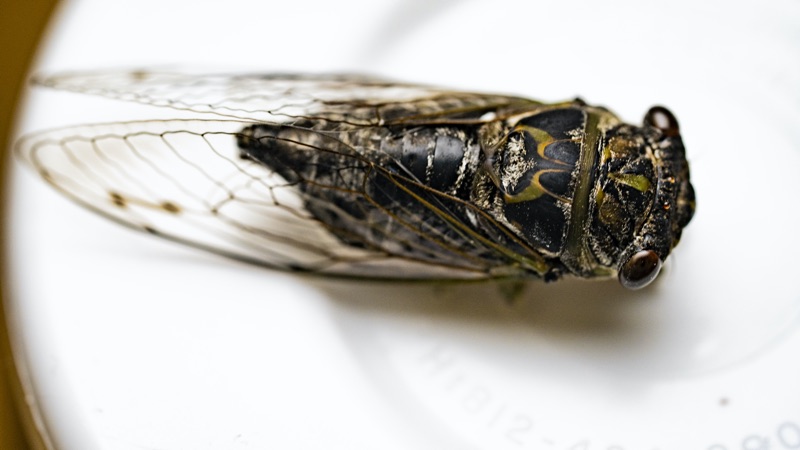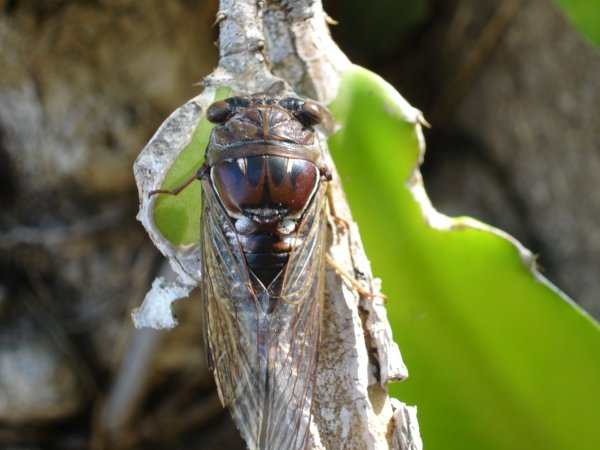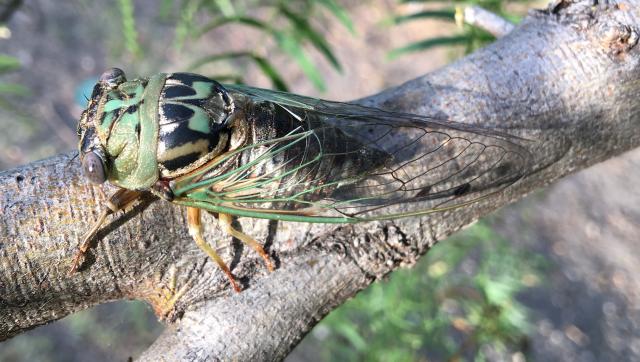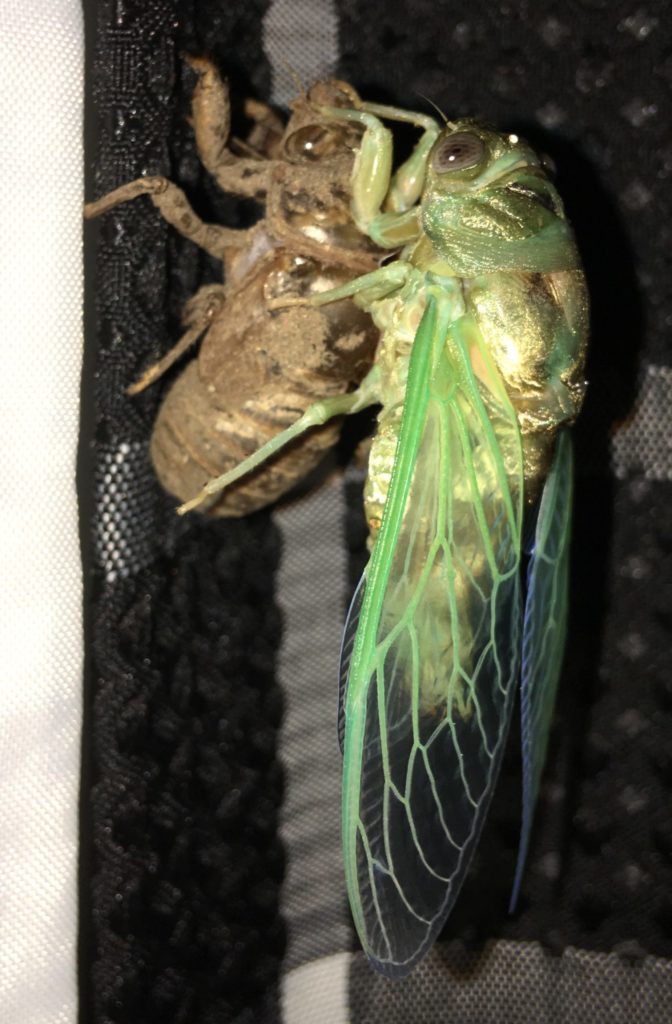Neotibicen pruinosus pruinosus (Say, 1825) aka Scissor(s) Grinder.
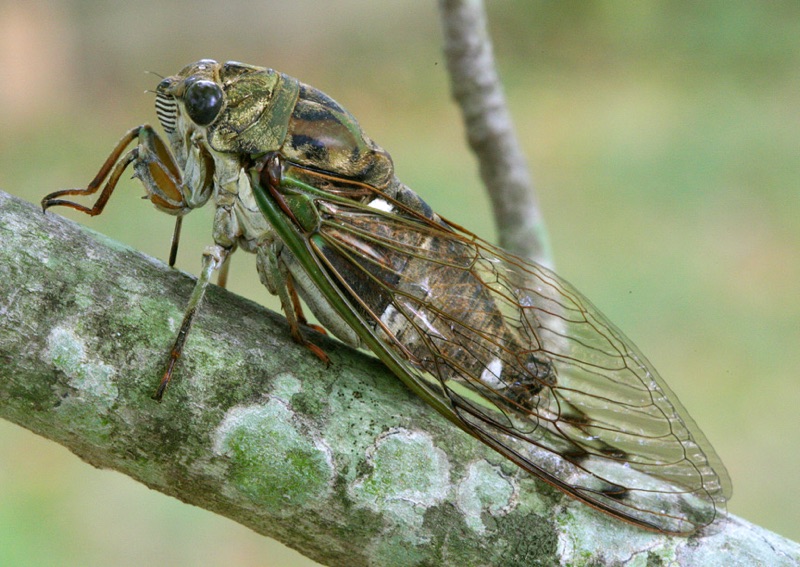
Photo by Paul Krombholz.
This is a Neotibicen pruinosus fulvus Beamer, 1924, for comparison:
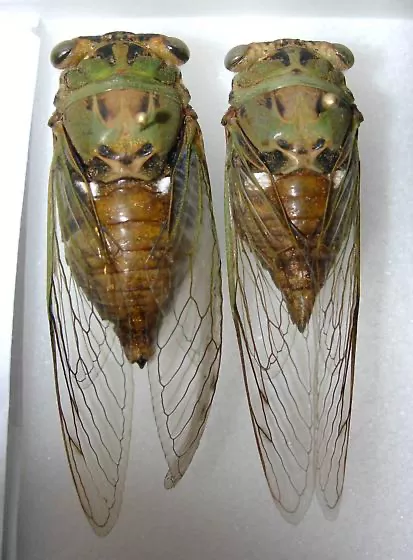
Photo by Bill Reynolds.
See all Neotibicen pruinosus pruinosus images & information on cicadamania.com.
There’s another sub-species of pruinosus called Neotibicen pruinosus fulvus, that is lighter in coloring. N. linnei, N. winnemanna, and N latifasciatus closely resemble N. pruinosus.
Song type: Call
“z-zape, z-zape, z-zape”
Source: ©Insect Singers.
Video Playlist
Playlists contain multiple videos found on YouTube.
Name, Location and Description
- Cicada Name: Neotibicen pruinosus pruinosus (Say, 1825)
- Short Name: N. pruinosus pruinosus
- Common Name: Scissor(s) Grinder
- Synonym/Former Name: Tibicen pruinosus pruinosus, Tibicen pruinosa
- When: July-October. Peak in August.
- Where it is found: AL, AR, CO, IL, IN, IA, KS, KY, LA, MI, MN, MS, MO, NE, NC, OH, OK, PA, SC, SD, TN, TX, WV, WI
- Maps: Biogeography of the Cicadas (Hemiptera: Cicadidae) of North America, North of Mexico [PDF]
- Description: The Scissor Grinder looks a lot like Linne’s Cicada but their wing doesn’t have bend that Linne’s Cicada has. The Scissor Grinder also seems to have more of an orange coloration to the ‘arches’ on its mesonotum.
- Eye Color: black
- Pronotal Collar Color: green
- Identification: Bug Guide
- Identification: Bill Reynolds on iNaturalist
- Identification: iNaturalist
- Subject Matter Expert website: Cicada Central
- Taxonomic Information: Integrated Taxonomic Information System
- Song: Insect Singers
Notes on the song of pruinosus by Wm. T. Davis:1
The song of pruinosa is quite unlike that of any of the other large native cicadas, and may be rendered as z-zape, z-zape, z-zape. The insect often remains quiet all day, singing from about 3 or 4 P. M. until dark.
Identification Key by Wm. T. Davis:1
A. Large, heavy bodied species ; head broad, uncus simple, and first cross vein in the fore wings starting from radius 3 far back, or about one third distant from base of first marginal cell.
B. Uncus longer than broad. Black species with green or greenish markings and black area on the central part of the abdomen beneath
C. Hind margin of pronotum or collar, green or greenish.
A narrow irregular area of black on the underside of the abdomen; opercula short and broad, and usually in the males an attenuated, pruinose stripe each side on the dorsum of segment three.
Teneral (soft) and sclerotized (hard) of an N. pruinosus
Classification:
Family: Cicadidae
Subfamily: Cicadinae
Tribe: Cryptotympanini
Subtribe: Cryptotympanina
Genus: Neotibicen
Species: Neotibicen tibicen
Sub-species: Neotibicen pruinosus fulvus Beamer, 1924
Sub-species: Neotibicen pruinosus pruinosus (Say, 1825)
List of sources
- Davis, W.T. 1918. Mississippi Cicadas, with a Key to the Species of the Southeastern United States. Journal of The New York Entomological Society. Vol. XXVI. Read on archive.org.
- Full Binomial Names: ITIS.gov
- Common names: BugGuide.net; The Songs of Insects by Lang Elliott and Wil Herschberger; personal memory.
- Locations: Biogeography of the Cicadas (Hemiptera: Cicadidae) of North America, North of Mexico by Allen F. Sanborn and Polly K. Phillips.
- Descriptions, Colors: personal observations from specimens or photos from many sources. Descriptions are not perfect, but may be helpful.
Notes:
- Some descriptions are based on aged specimens which have lost some or a lot of their color.
